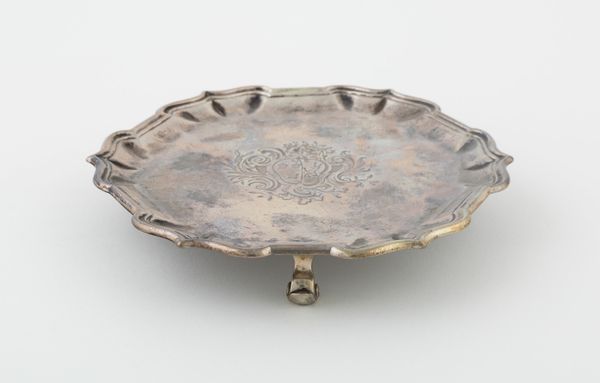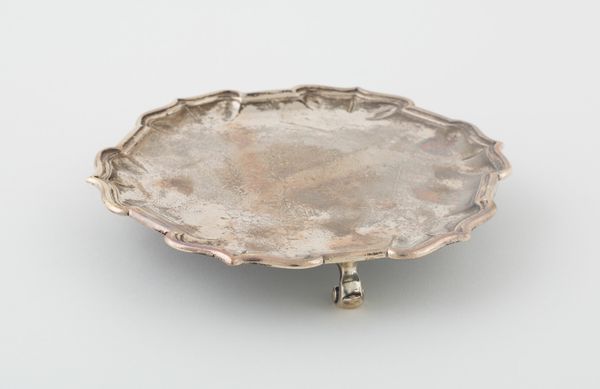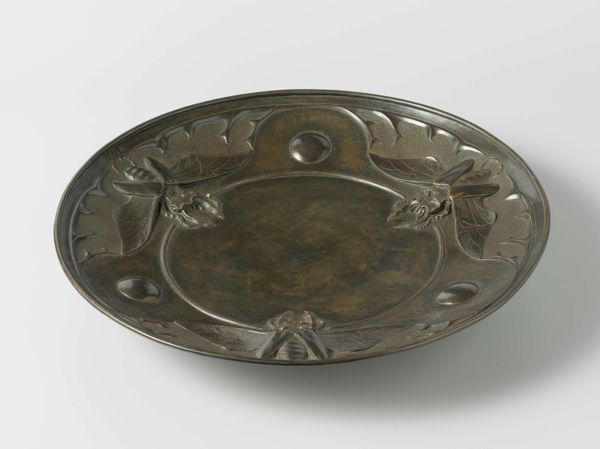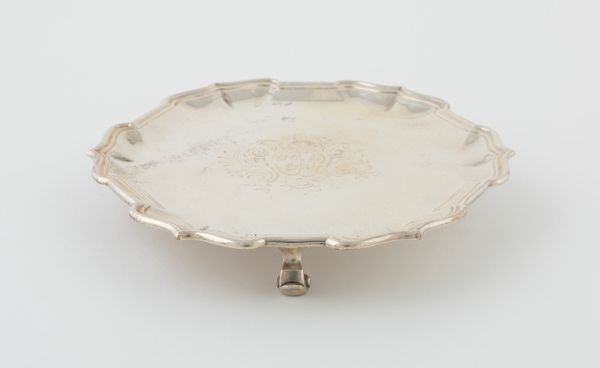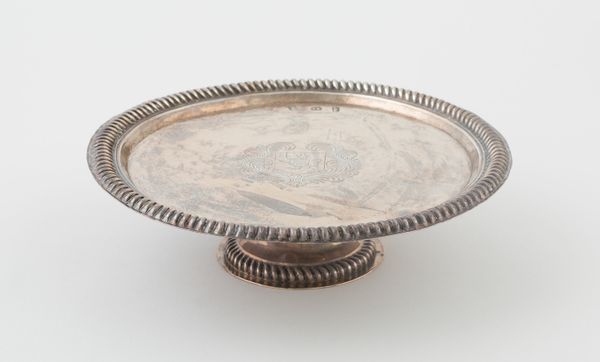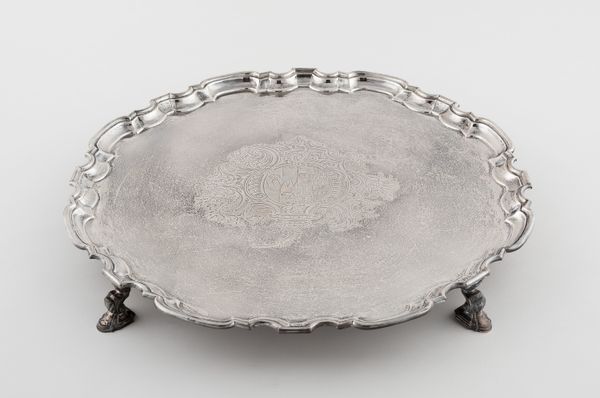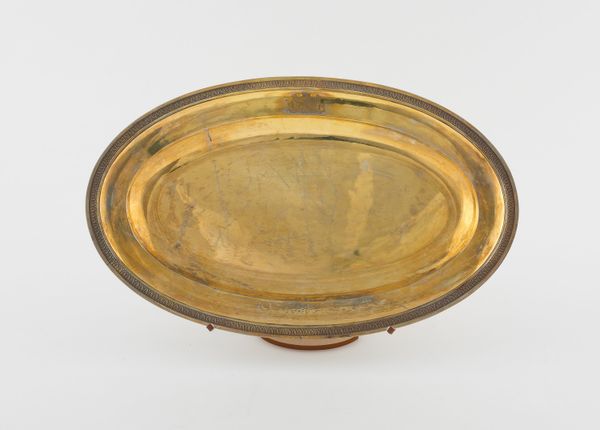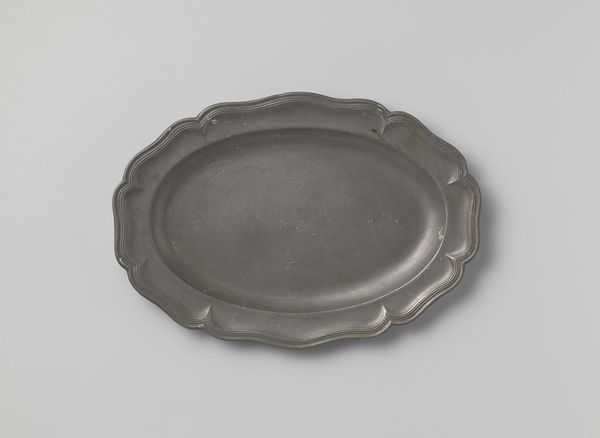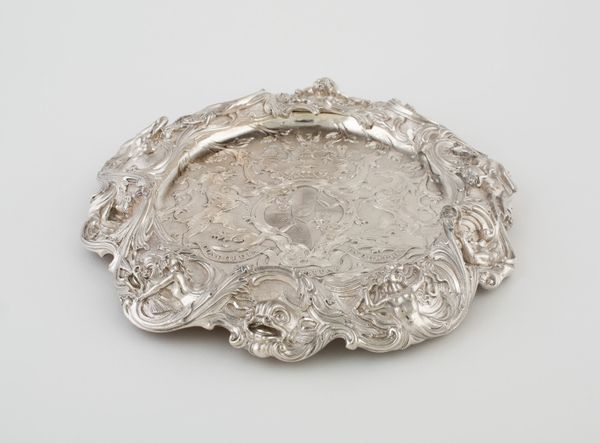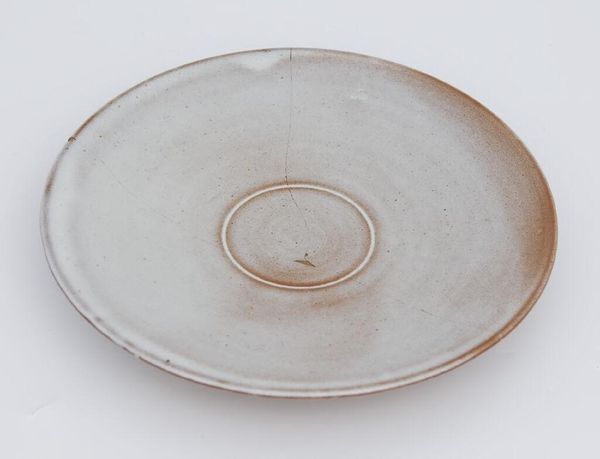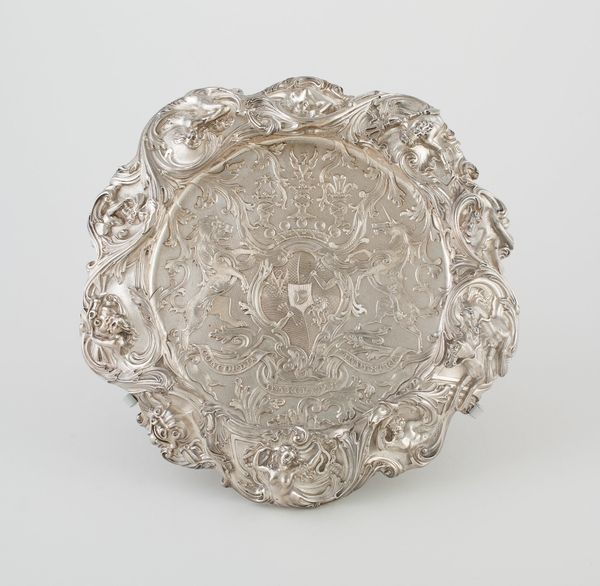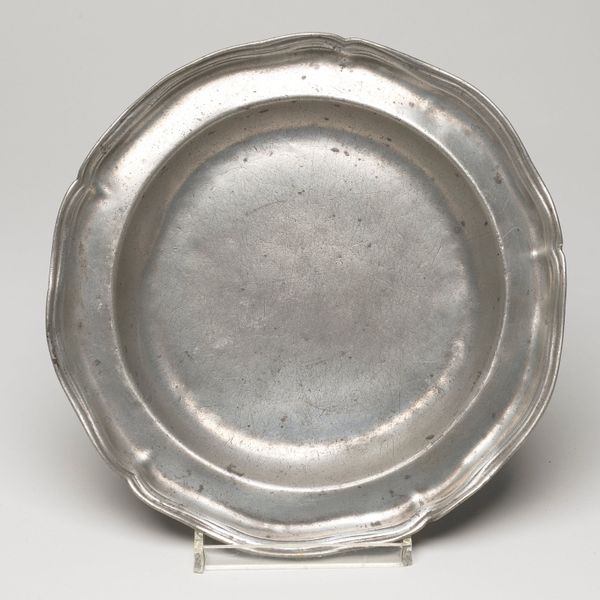
silver, metal
#
silver
#
baroque
#
metal
#
decorative-art
Dimensions: 2.5 × 16.5 cm (1 × 6 1/2 in.)
Copyright: Public Domain
Curator: Up next, we have a piece titled "Waiter," crafted between 1738 and 1739 by the artist Edward Feline. This striking example of decorative art is rendered in silver, embodying the Baroque style. Editor: It's a small dish, isn’t it? The silver has a tarnished quality that I find rather beautiful, gives it a kind of subdued elegance despite the rather ornate scalloped edges. It feels old and well-used. Curator: The "Waiter" presents an interesting insight into the material culture of the period. Silver objects like these were not simply functional; they were potent symbols of wealth, status, and social identity. Their ownership spoke volumes about the family who displayed or used them. Editor: Absolutely. Silver was an investment, and the Baroque style, with all its flourishes, demonstrates a conspicuous consumption, doesn’t it? This little dish probably took considerable time to produce. One wonders about the silversmith's conditions. We see the artistry but rarely consider the labour. Curator: That's an excellent point. And the engraving on the plate—most likely a family crest or coat of arms—underscores the personalization of luxury. It's fascinating to consider how this piece reinforced social hierarchies. The maker’s name also is interesting; often, these skilled makers remain anonymous in many historical narratives. Editor: It almost invites touch. The surface texture implies a direct, hands-on process. This maker would have likely understood every physical property of the material, every step in refining and manipulating it to this very refined purpose. You think about all the different artisans involved and each role, even though it presents such a cohesive message of elite refinement. Curator: Indeed, its purpose goes beyond mere utility; it encapsulates aspirations and ideals prevalent at the time. We can tell such a lot about the owners from something that appears initially quite modest. Editor: Examining this "Waiter," as unassuming as it may seem, reminds us of the intersection of material, labour, and society in shaping art and design of centuries ago. Curator: Precisely. The object gives a lot of historical nuance for those keen enough to inspect and speculate upon its design and manufacture.
Comments
No comments
Be the first to comment and join the conversation on the ultimate creative platform.
